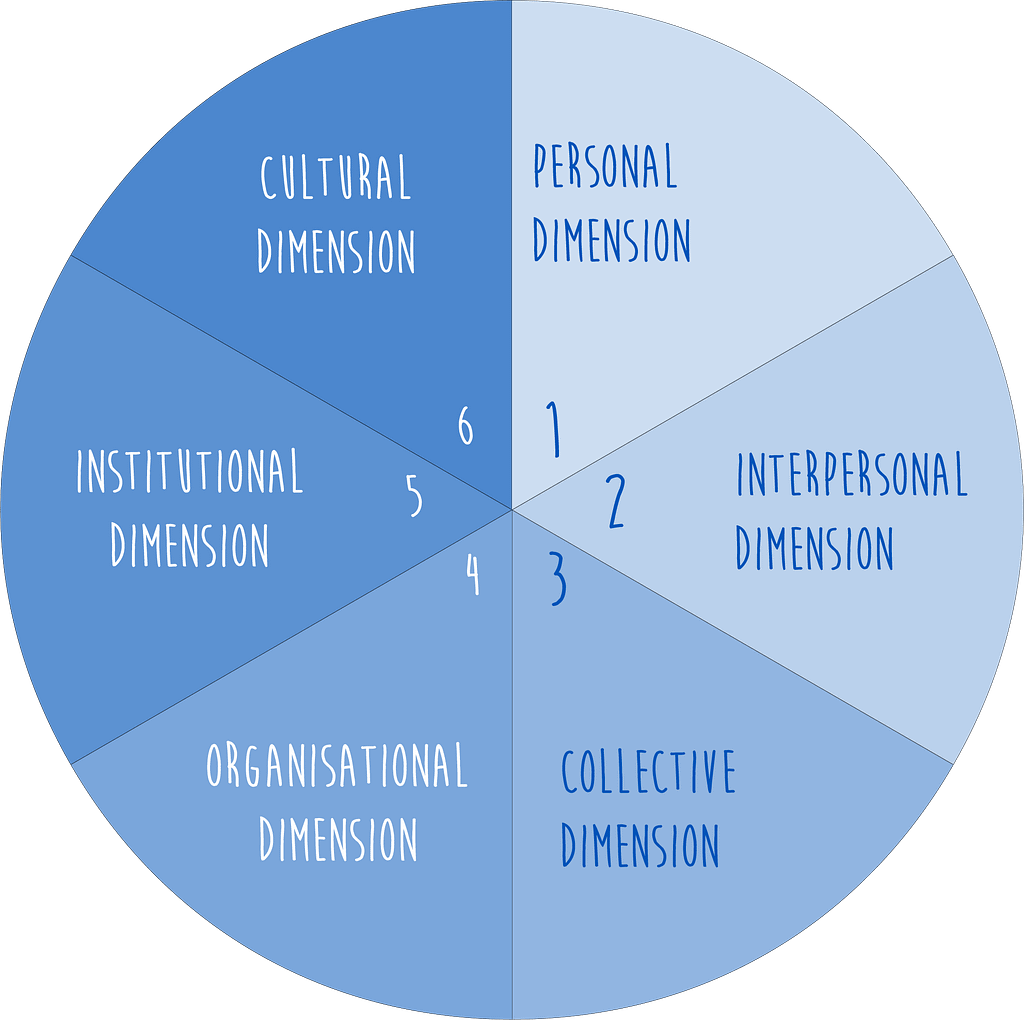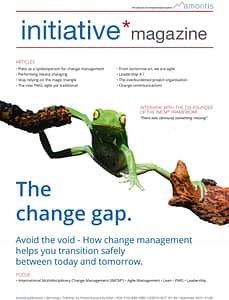While the term “multidimensional” sounds quite academic, the concept behind it is highly practical. Since a change is in the vast majority of cases a very complex phenomenon, understanding the different levels that can be affected by a change, the so-called dimensions, is essential.
Each dimension represents a certain perspective. Not every change necessarily affects all dimensions and some dimensions are usually more concerned than others. But understanding the different perspectives is a key lever for an effective multidimensional change management.
Here is an overview of the 6 dimensions of a change:
The dimension concept is an important part of the International Multidisciplinary Change Management (IMCM®) framework. We recommend you to consult this page if you want to know more about IMCM®.
1. Personal Dimension
2. Interpersonal Dimension
The interpersonal dimension complements the aforementioned dimension. It focuses on if and how the change has an influence on interactions and the relationship between those individuals as well as on their roles and synergies.
3. Collective Dimension
The collective dimension draws the attention to the change’s impact on groups instead of just individuals and their bilateral interactions. In this dimension, the professional and social groups and communities in touch with the change are analysed, providing insights about the change’s influence on the current dynamics within the group.

4. Organisational Dimension
The organisational dimension focuses on how the structure and processes of an organisation as well as its management is affected by the change along the 5M (Men, Market, Means, Machines, Management). It provides a more practical and operational perspective to the analysis of the change.
5. Institutional Dimension
6. Cultural Dimension
The cultural dimension is mainly about how the change influences the organisation’s identity, beliefs and habits. The history, origins, ambitions or evolution of the organisation are further aspects that also belong to the cultural dimension. In addition, there may also be significant subcultures within an organisation that are relevant to the change.
This article was first published in our initiative*magazine # 11, The change gap.
To get a free copy of this issue click the button below.













